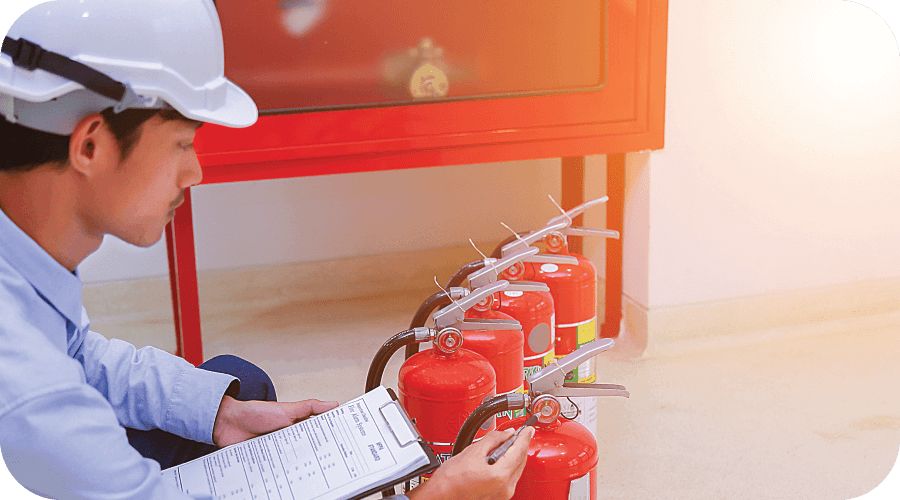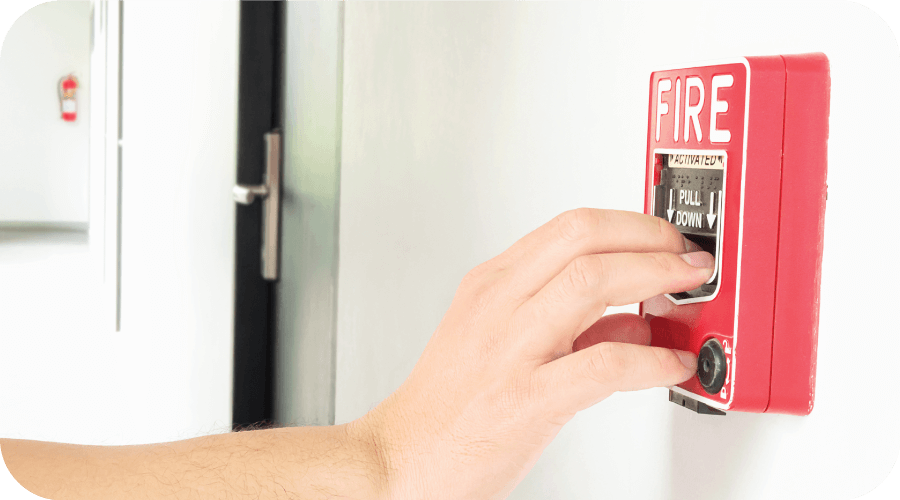Fire Risk Assessments for Care Homes
At Lanahan Risk Management services, our goal is to make the fire risk assessment process as simple as possible for you, whilst ensuring that your care home meets all required safety standards.

Is it a legal requirement for care homes to have fire risk assessments?

Under the Regulatory Reform (Fire Safety) Order 2005, it is a legal requirement for you to have a fire risk assessment for all care homes.
Fire risk assessments are also vital to identify any potential fire safety hazards which have been missed and address the next steps required to improve safety. On top of this, it legally proves that you have done your due diligence in the event of an unexpected fire.
Book a Care Home Fire Risk Assessment Today
How fire risk assessments for care homes work

Fire risk assessments for care homes involve a thorough assessment of the entire property with the goal of identifying hazards which could potentially lead to a fire. These risks are then rated by severity and likelihood, before we devise plans and procedures to reduce the risk of fire.
Under the Regulatory Reform (Fire Safety) Order 2005, the 'Responsible Person' is legally required to ensure a suitable and sufficient fire risk assessment is carried out. While the Responsible Person retains overall accountability,the assessment should be carried out by someone with the right knowledge and experience to do it properly.
A comprehensive risk assessment should include the following 5 steps:
- 1Identify fire hazards - List flammable/combustible items in the property, as well as potential heat/flame sources.
- 2Establish who is at risk - In the case of care homes, whether for adults or children, it’s important to think about who may be most at risk if a fire occurs. Many residents will be more vulnerable due to age, disability, mobility issues, learning difficulties, or emotional or behavioural needs. These risks must be taken into account when planning fire safety measures. This helps make sure that the right support, equipment and escape arrangements are in place for everyone in the building.
- 3Evaluate, reduce and protect from risk - Evaluate how likely each risk is to turn into an actual fire. From there, start implementing specific safety measures to reduce or remove the risk entirely. This could be by installing fire extinguishers/blankets, or by establishing effective fire escape routes.
- 4Record, plan and train - A fire action/escape plan should be created and every owner or other responsible person in the property should be aware of and trained according to this plan. This prepares everybody so that they are aware of how to act in the event of an emergency.
- 5Regular review - Regularly reviewing your fire risk assessment ensures that you can catch any new risks, or ones which were missed and update your plan accordingly to maintain maximum safety.
How often should a care home have a fire risk assessment?
A fire risk assessment is a legal requirement under the Regulatory Reform (Fire Safety) Order 2005 and must be kept up to date. While there is no set legal timeframe for how often it must be reviewed, best practice, particularly in higher-risk settings such as care homes, is to formally review the assessment at least annually, or sooner if there are significant changes to the premises, occupancy, or fire safety measures.
A fire risk assessment in a care home should also be reviewed whenever there are significant changes to the premises or how they are used. This includes situations such as:
In addition, the Responsible Person and care staff should remain vigilant to new or emerging fire risks as part of day-to-day good practice. Ongoing awareness helps ensure that hazards are identified and addressed promptly. For more guidance, refer to our fire safety risk assessment checklist.
Legislation around care home fire safety in the UK
Care homes fall under specific regulations which must be followed in the UK. As mentioned, the primary piece of legislation is the Regulatory Reform (fire safety) Order 2005, which outlines that it is a legal requirement for the ‘responsible person’ to ensure fire safety measures.
Another relevant piece of legislation is the Fire Safety Act 2021, which clarifies that the previous order covers the structure of buildings, external walls and flat entrance doors, meaning that these aspects must be included in fire risk assessments.
Finally, the Care Home Regulations Act (2001) reiterates many of these points, regarding taking adequate precautions against fire risks, and maintaining fire safety equipment.
Common fire risks in care homes
Care homes come with some added risks to most regular residential buildings as a result of the additional needs of some older residents. Here are a few risks to be aware of and look out for:
Protect your Care Home With a Fire Risk Assessment
Care home fire risk assessments by Lanahan Risk Management Services
As a care home owner, it’s possible that a fire risk assessment is not something you can dedicate enough time towards to ensure maximum safety. As a result, consider the help of our expert team at Lanahan Risk Management Services and our Fire Risk Assessment Services.
We’ve got a depth of knowledge when it comes to helping care home owners create, update and maintain their fire risk assessments, and providing easy-to-follow steps to improve safety for all residents and staff.
With our expertise, we’ll explain to you all safety regulations which you need to follow, and give you the peace of mind from knowing you are fully compliant.
Related blogs
Why Should you Outsource Health and Safety Management?
A good alternative to this is outsourcing health and safety management to
Are Fire Door Inspections a Legal Requirement?
When it comes to protecting property and saving lives, there are few
Gap Analysis vs Risk Assessments
Understanding Health and Safety Risk AssessmentsA health and safety risk assessment is
